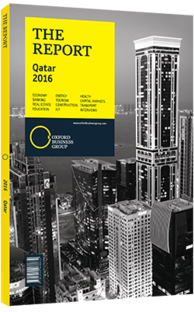This chapter includes the following articles.
Energy

The year 2015 was a challenging one for Qatar’s oil and gas industry. The state saw its hydrocarbons revenues, which account for a significant portion of its income, significantly impacted as an ongoing global oil price plummet accelerated, with crude oil losing over two-thirds of its value between June 2014 and January 2016. The price slump extended into 2016, driven by soaring global reserves and rising output from the US and Iran. Despite these challenges, Qatar is better positioned than many. The world’s fourth-largest producer of dry natural gas and largest producer of liquefied natural gas (LNG), it has benefitted from over a decade of targeted investments that have allowed expansion into value-added gas-to-liquids (GTL) and condensate production, with a planned new helium production project indicating long-term confidence in GTLs. Although state-owned Qatar Petroleum underwent major restructuring during the first half of 2015, it is slated for medium-term growth after launching a new strategy targeting investment in foreign production projects.
This chapter contains interviews with Mohammed bin Saleh Al Sada, Minister of Energy and Industry; Sheikh Khalid bin Khalifa Al Thani, CEO, Qatargas; and Hamad Mubarak Al Muhannadi, CEO, RasGas.

